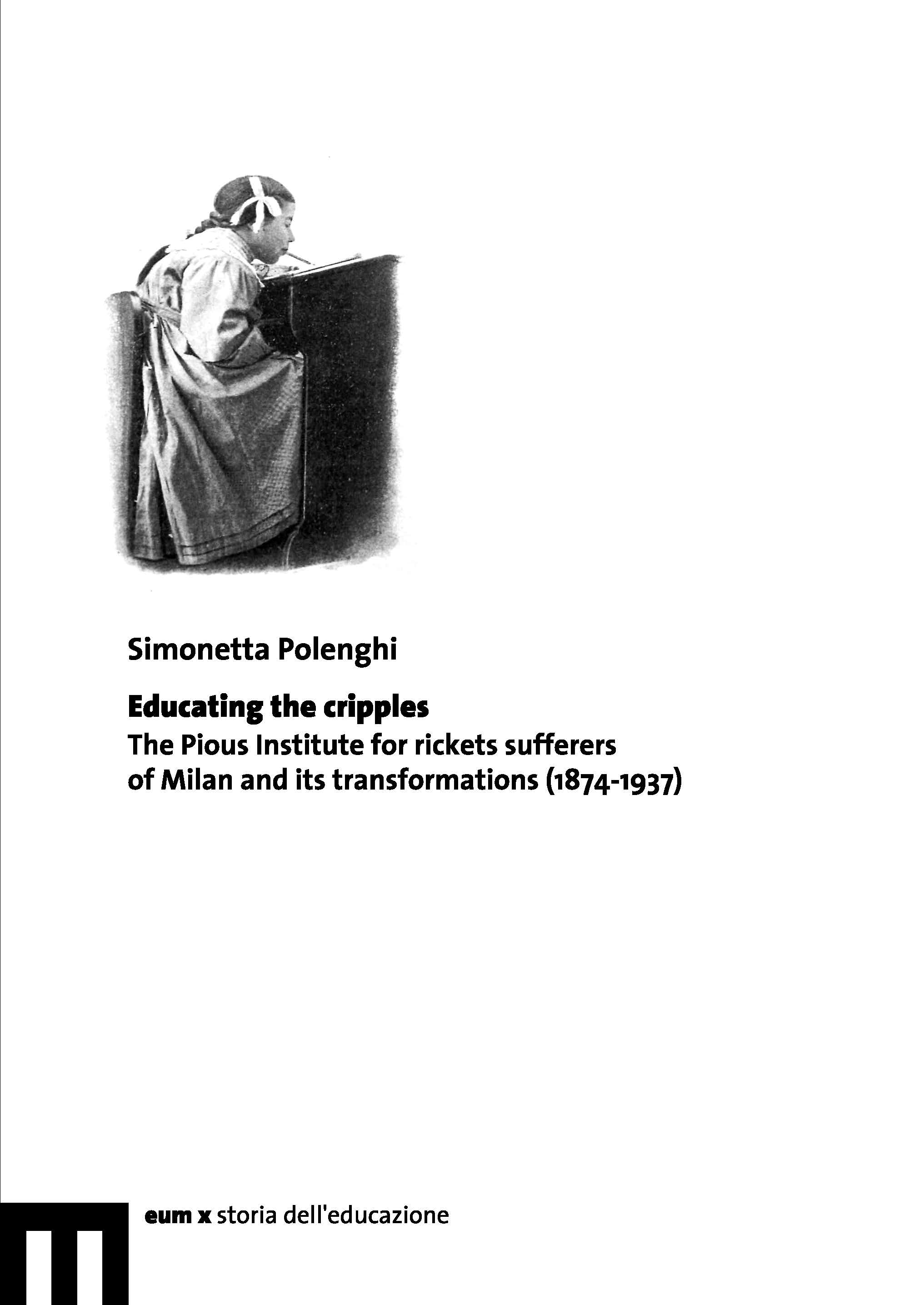Educating the cripples
The Pious Institute for rickets sufferers of Milan and its transformations (1874-1937)
Polenghi Simonetta
| Editore: EUM – Edizioni Università di Macerata | |
| pp. 102 | ISBN: 9788860562104 |
| ed. 2009 | |
| Formati: stampa | |
| Prezzo: € 9.00 |
The history of special education in Italy is a research area that until recently has been quite neglected, in spite of the fact that Italians can pride themselves on some very relevant experiences in the field. The cure and care for cripples had an early start in Italy, where cities like Turin and Milan were among the very first ones in the Western world which opened a school for rachitic children, in the Seventies of the XIXth century, rapidly followed by Bologna, where the very first Italian orthopaedic hospital was build. The story of the education of these children, often coming from poor families, is linked with the development of orthopaedics as an academic discipline and is therefore connected with the history of university and medical sciences. The perspective of this book, though, is not a medical one, but is rather a pedagogical one, where history of education and of university are the focus: keeping the advancement of orthopaedics on the background, the book aims at showing the history of the progresses of the education of the cripples in the Kingdom of Italy, by sheding light on the relevant and pioneering experience of the Pious Institute for rickets sufferers of Milan, nowadays an Orthopaedic Hospital. This story has been written using not only the articles, essays and booklets written by the first three directors of the Institute, but also archival sources of the Institute and of the State and City archives of Milan, and of the University archives of Pavia and Milan. This book provides a whole look on the Pious Institute, from its foundation in 1874 to the retirement of its third director in 1937, and devotes particular attention to the schooling of rachitic, mutilated, lame, deformed and paralytic children, showing the anthropology and pedagogy which were underneath the medical approach. Indeed the history of the Institute, that has many links with the international context, shows not only its impressive quantitative improvement - from a little school for rachitic children to a modern hospital - but also the remarkable attention to educational needs, as well as to medical progresses, of its directors and governors
Catalogo
- Ingegneria civile ed Architettura
- Ingegneria industriale e dell'informazione
- Religioni e Teologia
- Scienze agrarie e veterinarie
- Scienze biologiche
- Scienze chimiche
- Scienze della Terra
- Scienze dell'antichità, filologico-letterarie e storico-artistiche
- Scienze economiche e statistiche
- Scienze fisiche
- Scienze giuridiche
- Scienze matematiche e informatiche
- Scienze mediche
- Scienze politiche e sociali
- Scienze storiche, filosofiche, pedagogiche e psicologiche

